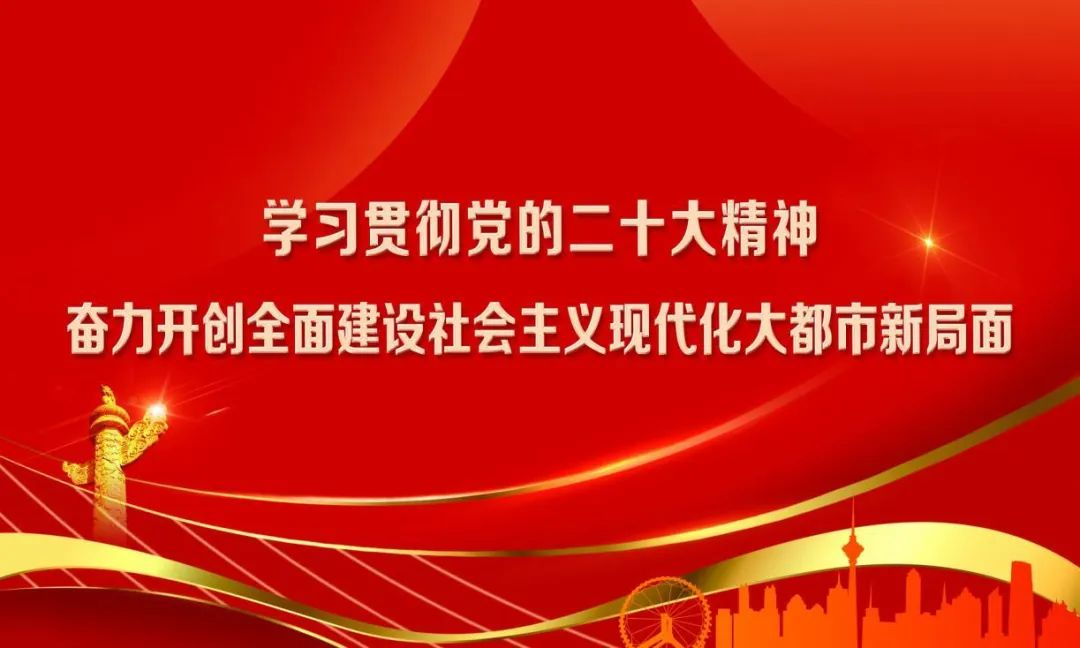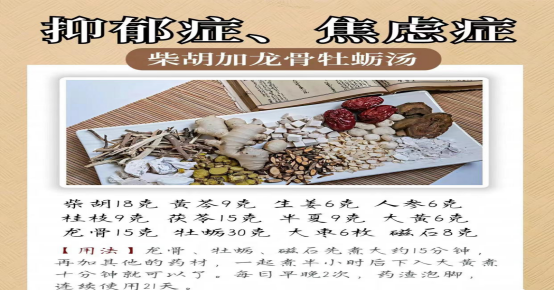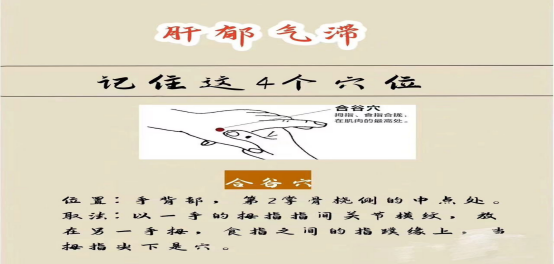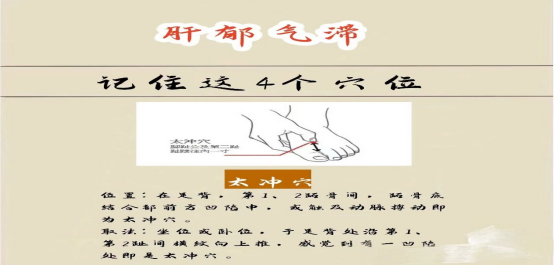

Traditional Chinese Medicine (TCM) Knowledge: How to Regulate Qi Stagnation and Blood Stasis in the Liver?
Although modern women are rarely like Lin Daiyu from “Dream of the Red Chamber,” in reality, many women experience symptoms of liver qi stagnation (肝气郁结) and blood stasis (血瘀). Women who are introverted, have narrow-mindedness, carry heavy emotional burdens, or experience long-term mental stress are prone to these symptoms. One significant manifestation is the presence of blood clots in menstrual blood; this is just one indication of qi stagnation and blood stasis. When qi and blood are not flowing smoothly in a woman’s body, they may experience various pains, such as headaches and dysmenorrhea. There may also be signs of stasis, such as skin blemishes and excess fat. If the focus is more on qi stagnation, the symptoms of “pain” will be more pronounced, including unexplained chest tightness, pain in the sides, stomach pain, abdominal pain, and breast pain before menstruation, all indicating the presence of qi stagnation. If the focus is more on blood stasis, the symptoms related to “color” will be more evident, such as dark or purplish lips and nails, possible bruises on the skin, dark circles under the eyes, and chloasma on the face. During menstruation, dysmenorrhea, dark purple menstrual blood with clots, etc., are all manifestations of blood stasis.Many young women feel embarrassed to talk about menstruation. However, through their complexion and other symptoms, it is still easy to make a judgment. Once identified, appropriate care should be provided. Generally, this involves a comprehensive approach to regulate the liver and relieve qi stagnation, nourish the spleen and stomach, strengthen the foundation and cultivate essence, and nourish the heart and blood.Here are two dietary therapy recipes that can be beneficial for improving symptoms caused by qi stagnation and blood stasis, such as body coldness, irregular menstruation, and dysmenorrhea.Recipe 1: Sand Ginger and Pig Stomach Soup
Ingredients: 10g of Sha Ren (砂仁, Sand Ginger), 9g of Tian Qi (田七, Notoginseng), 100g of pig stomach. The method is to first clean the pig stomach with boiling water, scrape off the inner membrane, and remove the odor. Then, put it together with sand ginger and notoginseng in a pot, add an appropriate amount of water, bring to a boil, and simmer for about 2 hours. Finally, drink the soup and eat the meat.
In this soup, sand ginger is a commonly used aromatic herb with a unique flavor and texture. It can disperse cold and eliminate dampness, and has excellent effects in soothing the liver, relieving depression, and promoting qi flow. Notoginseng can disperse stasis, stop bleeding, and reduce swelling and pain. Additionally, pig stomach can nourish the spleen and stomach, making this soup beneficial for replenishing deficiencies, strengthening the spleen and stomach, and nourishing qi and blood, especially suitable for pregnant women and those who are thin and short of breath. However, women with yin deficiency and heat should avoid it.
Recipe 2: Brown Sugar and Ginger Drink
Ingredients: brown sugar and ginger. The preparation is very simple; just slice 30g of ginger, put it in a pot with about 250 mL of water, add two tablespoons of brown sugar, and boil. Alternatively, you can place the ginger slices and brown sugar in a container, add an appropriate amount of water, and steam it in a steamer.
Brown sugar is known to be a great nutritional supplement for women, as it has the effects of nourishing blood and benefiting qi, making it very suitable for postpartum women. Moreover, brown sugar promotes blood circulation, invigorates blood, warms the spleen and stomach, and transforms stasis into new blood. Ginger, being spicy and warm, can disperse cold, induce sweating, resolve phlegm, stop cough, and alleviate stomach pain, making it effective in dispelling cold and preventing dampness, and it can also be consumed during menstruation.
In TCM, emotions such as anger, depression, and anxiety often appear together, exacerbating the patient’s condition. This condition often arises from emotional distress, which harms the liver, leading to liver qi stagnation and causing irritability, restlessness, and sighing. Insufficient liver blood can lead to insomnia and vivid dreams. TCM has a well-known formula for treating depression and anxiety: Chai Hu Jia Long Gu Mu Li Tang (柴胡加龙骨牡蛎汤).Ingredients: 18g of Chai Hu (柴胡, Bupleurum), 9g of Huang Qin (黄芩, Scutellaria), 9g of Zhi Ban Xia (制半夏, Pinellia), 6g of ginger, 6 pieces of Da Zao (大枣, Jujube), 6g of Ren Shen (人参, Ginseng), 9g of Gui Zhi (桂枝, Cinnamon Twig), 15g of Fu Ling (茯苓, Poria), 6g of Da Huang (大黄, Rhubarb), 15g of calcined Long Gu (龙骨, Dragon Bone), 30g of calcined Mu Li (牡蛎, Oyster Shell), and 8g of Ci Shi (磁石, Magnetite).☆☆☆Formula Explanation: Xiao Chai Hu Tang (小柴胡汤) soothes the liver and relieves depression, strengthens the spleen and harmonizes the stomach. Gui Zhi and Chai Hu harmonize the nutritive and defensive qi; Fu Ling harmonizes the stomach and transforms dampness; Long Gu and Mu Li calm the liver and subdue wind.Main Symptoms: vivid dreams, excessive thinking, emotional instability, irritability, and sighing.Supplement: Chai Hu Jia Long Gu Mu Li Tang can soothe the liver, relieve depression, calm the liver, and strengthen the spleen and stomach, making it a good formula for treating liver qi stagnation, liver wind, and liver-spleen deficiency. Clinically, it can be tried for patients with anxiety and depression, especially menopausal women.

Next, I will introduce three classic TCM patent medicines for soothing the liver and relieving depression:Jia Wei Xiao Yao Wan (加味逍遥丸): It has the effects of soothing the liver and strengthening the spleen, nourishing blood, regulating menstruation, and clearing heat. It can be used when there is liver qi stagnation with blood deficiency or disharmony between the liver and spleen, and it can also improve irregular menstruation or symptoms of dizziness.Chai Hu Shu Gan San (柴胡疏肝散): This is a common Chinese medicine with the primary effect of invigorating blood, relieving pain, and soothing the liver. It is an excellent remedy for patients with liver qi stagnation and rib pain.Xiao Chai Hu Granules (小柴胡颗粒): These can treat tension, insomnia, and breast tenderness or discomfort during menstruation, playing a role in soothing the liver and regulating qi.Classic Acupuncture Points for Soothing the Liver and Relieving Depression:He Gu (合谷穴) and Tai Chong (太冲穴)
Function: Soothing the liver and relieving depression, promoting qi and invigorating blood, and unblocking the meridians. Method: Massage and moxibustion.
It is recommended to use moxibustion for better effects on liver qi stagnation.
He Gu (合谷穴) also known as: Tiger’s Mouth

Tai Chong (太冲穴) Location: Located on the dorsum of the foot, between the first and second metatarsal bones.

Conclusion: TCM teaches that to maintain health, one must first cultivate the heart. This is a philosophy that emphasizes being open-minded, calm, and self-governing, neither being overly critical of others nor oneself. In everything, one should first consider comfort for both oneself and others, without forcing or compromising, accepting oneself and others as they truly are. With a good mindset, any health method, when applied slightly, will yield results.
Source: Baodi District Traditional Chinese Medicine Hospital
Reviewed by: Chen Hua
Proofread by: Liu Xiuping
Edited by: Jiang Yuqi


